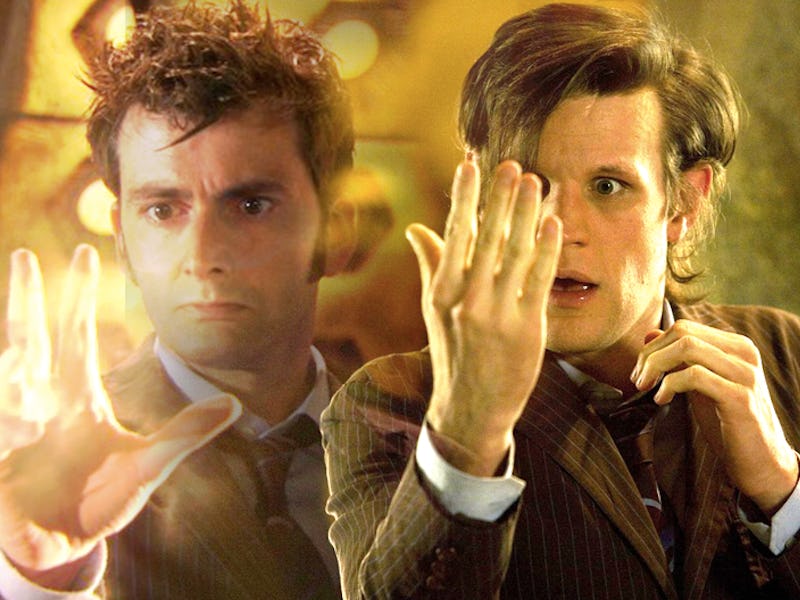The Doctor was dying. After three years of exploring time and space in a blue police box dubbed the TARDIS, fans of the British children’s show Doctor Who assumed it was the end. The screen faded to white and not-so-before-their-eyes, the Doctor got a new face. 50 years ago today, William Hartnell’s Doctor “renewed”into Patrick Troughton and changed the way serialized entertainment worked in a way audiences had never seen before.
The Doctor regenerated for the first time on October 29, 1966 at 6:13 p.m. GMT. While we live in a world where it’s impossible to imagine Doctor Who without a regeneration and a new face every few years, the change was a novelty, and it was mostly overlooked.
Most viewers saw the change as the show simply “replacing” the lead actor. While Troughton’s Doctor did his best to explain to his companions, Ben and Polly — and, simultaneously, the audience — the finer points of regeneration, it didn’t really stick. And neither did the early terminology or mythology.
William Hartnell as the 1st Doctor
Regenerating was originally called “renewing,” much in the same vein as the Doctor’s origins being a mystery as well; he wasn’t revealed to be a Time Lord from Gallifrey until much later in the series. The creators hadn’t figured out the mythology for the Doctor’s origins yet, let alone the mechanics of a Time Lord’s regeneration cycle.
The regeneration from Hartnell to Troughton’s Doctor was, in the end, a convenience. The show’s ratings were down and Hartnell was falling ill (which only added to the issues of his difficult personality). So when the Doctor first regenerated in “The Tenth Planet” — of which the original copy disappeared from the BBC archives long ago — it was both an advantage for the writers and the revolutionary start of something special in sci-fi.
What other show on television requires its lead actor to be switched out every few years? While death and rebirth are common themes within science fiction, Doctor Who is on a whole other level. Its mythology — started 50 years ago — replaces one face for another, and that’s a huge part of the show being, ultimately, timeless.
